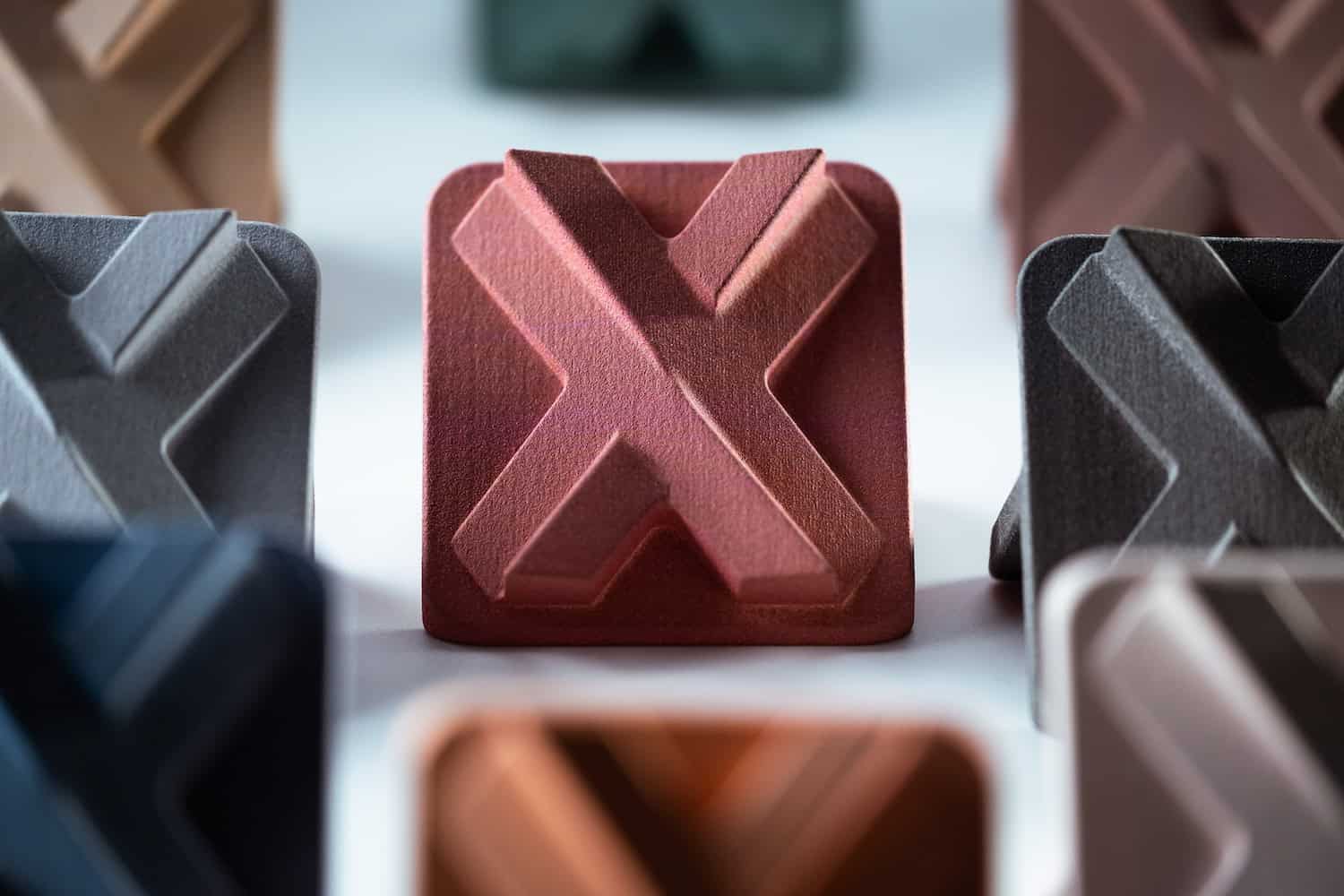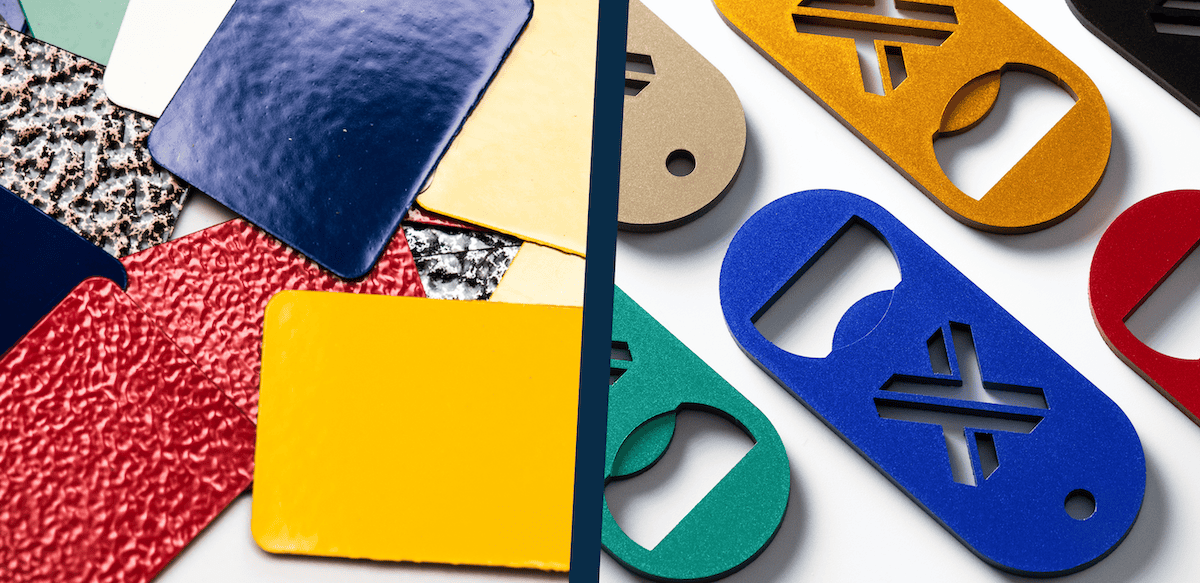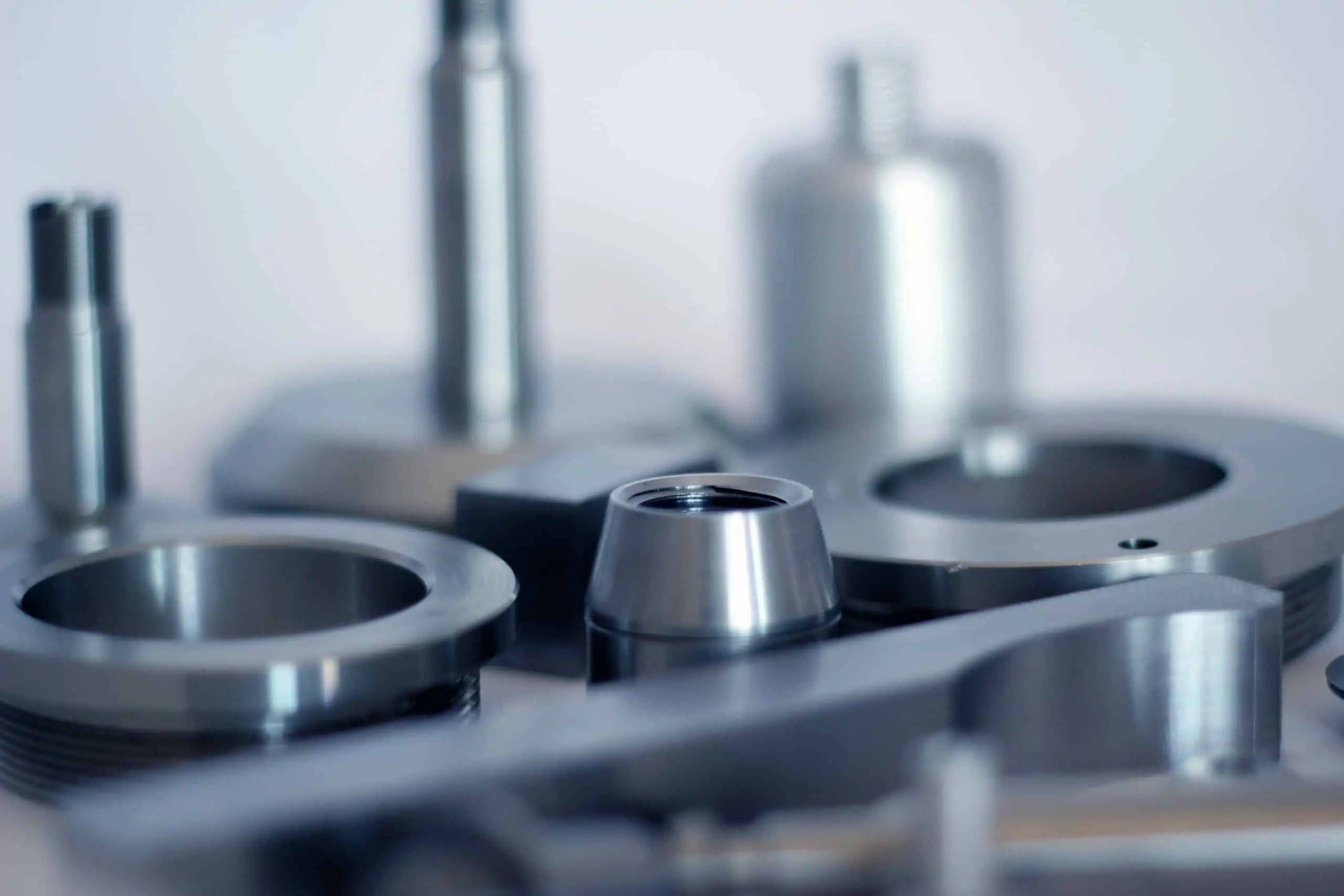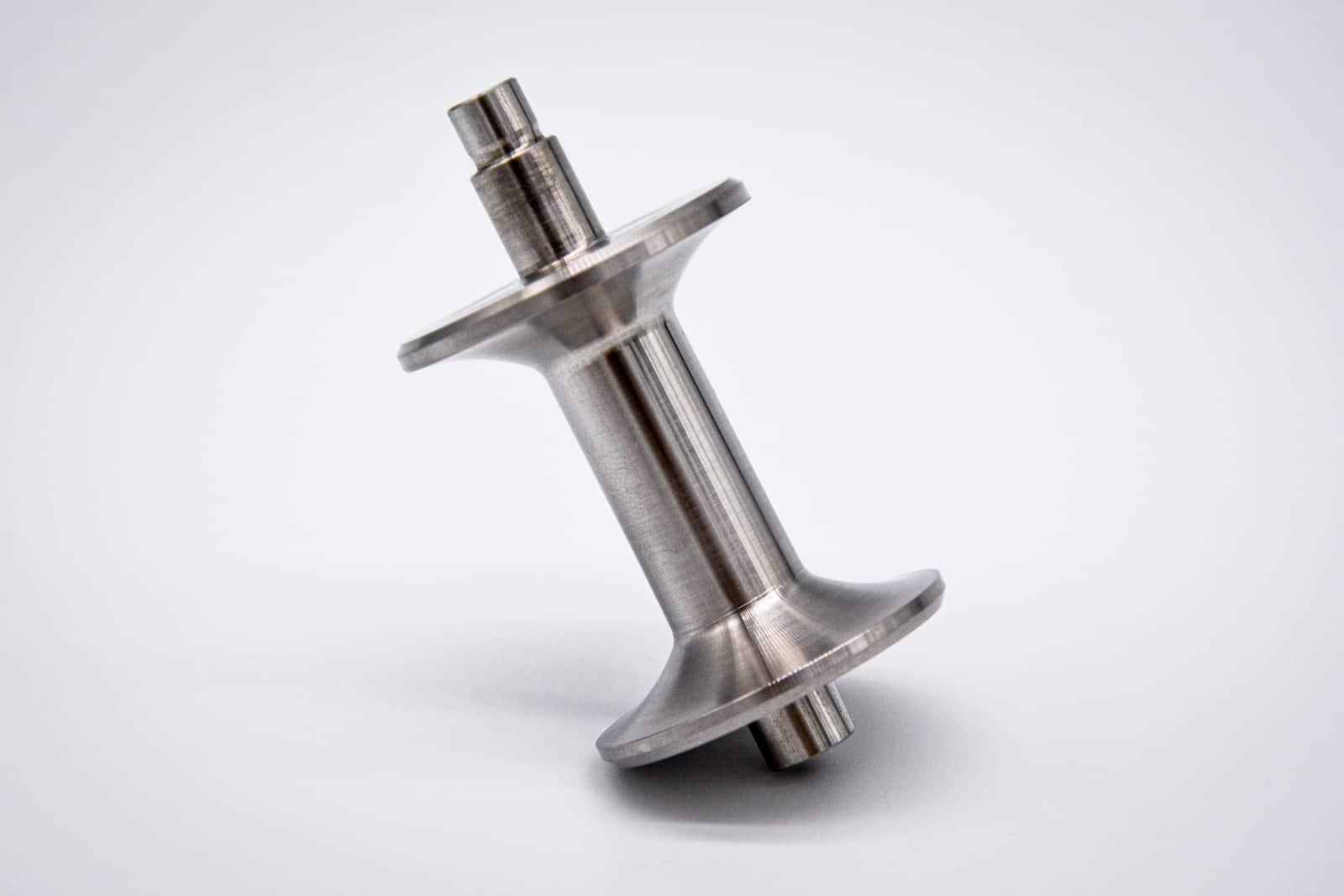Powder coating stands out for its advantages in durability, corrosion resistance, and UV protection. For example, a powder-coated aluminium part offers significantly improved resistance to rust and weathering compared to an uncoated counterpart, which may corrode or oxidise over time when exposed to moisture or outdoor conditions. Additionally, powder-coated surfaces maintain their colour and gloss for longer under UV exposure, whereas uncoated or liquid-coated parts (like those using conventional solvent-based paints) are more prone to fading and surface degradation.
The finish you select—whether matte or glossy, smooth or textured—does more than define the look of your product. Gloss and texture directly impact functionality. For instance, a high-gloss finish is often easier to clean, making it ideal for appliances or automotive parts, while a matte or textured finish can help hide surface imperfections or improve grip in industrial tools. Powder coating is also incredibly versatile, working on a wide range of materials including metals like aluminium, steel, and cast iron, as well as heat-resistant plastics and even glass in certain cases.
What Is Powder Coating and How Does It Work?
Powder coating is a dry finishing process that combines aesthetics and performance. It involves applying a fine, electrostatically charged powder—made up of pigments, resins, and additives—onto prepared surfaces using a specialised spray gun. The charged particles ensure uniform coverage, sticking firmly to the part. The coated part is then cured in an oven, typically at around 200 °C for 10–20 minutes. During curing, the powder melts, flows, and hardens into a smooth, durable, and protective layer.

A key advantage of powder coating is its ability to provide excellent UV resistance, especially when enhanced with specific additives like UV absorbers and light stabilisers. The choice of resin also matters—acrylic resins, for instance, are particularly effective for creating UV-resistant finishes. These enhancements help powder-coated parts maintain their colour, gloss, and durability, even when exposed to prolonged sunlight, making them a reliable option for outdoor applications.
Choosing the Right Gloss Level for Your Powder-Coated Parts
From the rugged, low-reflectivity look of matte finishes to the sleek, mirror-like appeal of full gloss, each level offers unique benefits depending on the application. The table below breaks down everything you need to know about gloss levels, including their reflectivity, textures, and how they affect coating thickness and performance, so you can confidently choose the right finish for your project.

*Reflectivity refers to how much light the surface reflects. Lower reflectivity creates a subdued, non-shiny appearance, ideal for minimising glare.
Types of Finish Gloss
Powder coating offers four distinct levels of gloss, each tailored to meet specific aesthetic and functional needs. Whether you’re looking to enhance the visual appeal with a reflective, high-gloss finish or prioritise practicality by hiding imperfections with a matte look, the right gloss level can make a significant difference. Some finishes focus on maximising durability or striking the perfect balance between style and performance.
- Matte: A surface with a minimal reflectivity of 0-20% has almost no shine. It has a soft appearance and produces minimal glare. A matte finish is great for subdued appearances, rough-finish parts, and industrial, and outdoor applications.
- Satin: Low reflectivity of 20-40% results in a surface that exhibits more shine than a matte finish. It strikes a balance between low glare and reflectivity. It is suitable for indoor, office, and retail use.
- Medium gloss: Medium reflectivity of 40-60% with balanced shine and satin appearance creates a classy and versatile appearance. It is suitable for kitchen appliances and indoor applications.
- High gloss: High reflectivity of 80+% showcasing quality and luxurious appearance creates a stunning visual effect that makes it an ideal choice for those looking to elevate the aesthetic appeal of their spaces. High gloss is ideal for use where easy cleaning is required, as well as for decorative accents and luxury items.

Types of Finish Texture
Texture adds more depth and visual tactility. There are many different texture styles, but the most common finish texture types are:
- Sand texture: This provides a unique tactile aesthetic experience. This finish can be used to hide imperfections or for a “rugged” look and extra friction for better grip or non-slip surfaces. Sand texture cannot be paired with a finish gloss shinier than satin.
- Hammer texture: This provides the classic “orange peel” surface texture. It is more likely to be paired with medium- and high-gloss finishes, with irregular surface patterns helping to minimise surface imperfections and create a smoother appearance. Hammer texture reduces reflectivity properties.
- Wrinkle texture: This texture exhibits a more coarse and rounder sand texture for a more irregular experience. Wrinkle texture adds more depth and tactile grip to the surface than sand texture. It is not compatible with gloss finishes, however.
- Smooth texture: Provides the classic clean and sophisticated texture that goes with high-gloss applications, making it a popular choice for luxury automotive components, decorative furniture, and premium appliances. It provides a uniform surface that enhances visual appeal. A smooth texture is more prone to show wear and tear early in the service life than a rough or textured surface, which can help conceal minor scratches and scuffs, maintaining the appearance of the coated product for a longer time.
Materials That Can Be Powder Coated
Materials that are commonly powder coated, either for aesthetic reasons or for increased durability and corrosion resistance, include but are not limited to:
- Aluminium: Commonly powder coated to enhance corrosion resistance and aesthetics.
- Steel (carbon and stainless): Powder coatings provide a durable, protective layer against rust and wear.
- Cast iron: Benefits from powder coating to prevent oxidation and improve longevity.
- Galvanised steel: Requires proper surface preparation to ensure coating adhesion.
- Zinc, brass, copper, magnesium, titanium: These metals can be powder coated, though specific preparation steps are necessary to achieve optimal results.
Plastics are more difficult to powder coat due to their heat sensitivity. Only high-temperature-resistant plastics, such as polysulfone, polyetherimide, and polyphenylene, are suitable for the powder coating process.
Powder Coating Benefits and Limitations
Powder coating offers several advantages over traditional wet spray paint, making it a popular choice for industrial, commercial, and decorative applications. However, like any process, it comes with limitations that must be considered.
| Advantages | Limitations |
| Durability: Powder coating creates a thick, tough layer with strong adhesion, making it resistant to impact, wear, and corrosion. | Thick coating only: Thin coats often result in an uneven “orange rind” texture, limiting the process to thick coatings only. |
| Efficiency: Powder coating achieves a consistent, high-quality surface layer in a single application. | Thin profiles and sharp edges: Adding powder coating thickness can distort sharp edges or alter dimensions of thin profiles during curing. |
| Flexibility: A wide variety of colors, gloss levels, and textures allow for endless customisation options. | Color matching: Unlike wet spray paints, powder pigments cannot be mixed on-site, making custom colors less flexible and requiring pre-ordering. |
| Eco-friendly: Powder coating produces minimal waste as excess powder can be recycled, and the process avoids the use of solvents or volatile organic compounds (VOCs). | Equipment costs: Powder coating requires specialised equipment, including industrial ovens and spray booths, which can be a barrier for small operations. |
| Consistency: The electrostatic application ensures an even coating without runs, drips, or application marks. | Material limitations: Powder coating is unsuitable for heat-sensitive materials, as the curing process requires high temperatures that may warp or damage them. |
| UV resistant: Additives like UV stabilisers and corrosion inhibitors enhance powder coating’s protection against ultraviolet light and weathering. | Limited to heat-resistant materials: Materials that cannot withstand the curing temperatures cannot be powder coated, restricting its use in some applications. |
Differences Between Powder Coating and Spray Painting
When deciding between powder coating and spray painting, it’s not just about choosing a colour—it’s about aligning the finish with the performance, durability, and environmental demands of your project. Powder coating is often favored for its robustness and eco-friendliness, while spray painting shines in its accessibility and flexibility for intricate designs or on-site touch-ups.
| Factor | Powder Coating | Spray Painting |
| Durability | More durable due to a continuous, thick film with superior adhesion. Ideal for high-wear applications. | Less durable and prone to chipping or wear over time. Suitable for low-stress applications. |
| Application | Requires a specialised spray gun or fluidised bed for electrostatic application. | Can be applied with a conventional spray gun, making it more accessible for small-scale projects. |
| Curing | Requires an industrial curing oven, typically at 200 °C. | Cures at ambient temperatures, making it easier to apply in any setting. |
| Environmental Impact | Eco-friendly with no solvents or volatile organic compounds (VOCs). | Involves solvents and releases VOCs, contributing to environmental pollution. |
| Cost | Higher initial cost due to equipment and setup, but more cost-effective long-term with minimal maintenance. | Lower initial cost, but requires frequent maintenance, increasing costs over time. |
| Accuracy | Best suited for uniform surfaces. Slightly less precise on intricate or detailed parts. | Highly precise, making it ideal for detailed parts and complex geometries. |
Choosing Powder Coating for Your Parts
Powder coating combines durability, versatility, and eco-friendliness, making it a superior finishing option for products such as furniture, appliances, automotive components, and architectural designs. Its wide range of gloss levels—from matte to high-gloss—and textures like smooth, wrinkle, or hammered ensure both functional and aesthetic needs are met.
To achieve the best results when ordering powder-coated parts at Xometry, it’s crucial to specify your expectations. Clearly indicate your desired gloss level (matte, satin, medium-gloss, or full-gloss), texture (smooth or patterned), and colour requirements (RAL classic or custom). Don’t forget to mention any unique conditions, such as outdoor exposure or heavy wear, to ensure the coating is tailored to your application.
Have you tried powder coating for your parts? Let us know your experiences and preferences when it comes to selecting gloss and texture—we’d love to hear your thoughts!
 Europe
Europe  Türkiye
Türkiye  United Kingdom
United Kingdom  Global
Global 

 Login with my Xometry account
Login with my Xometry account  0
0














Comment(0)